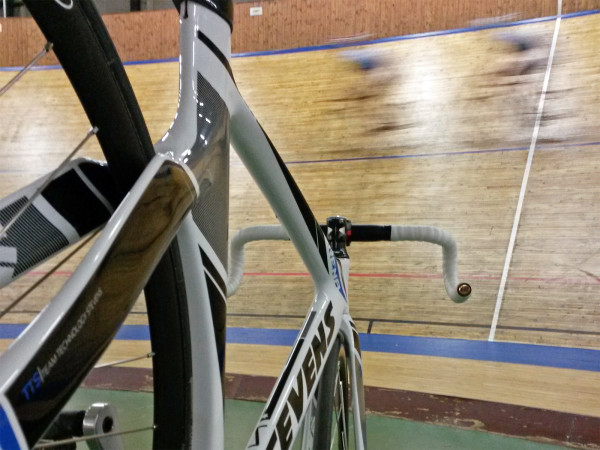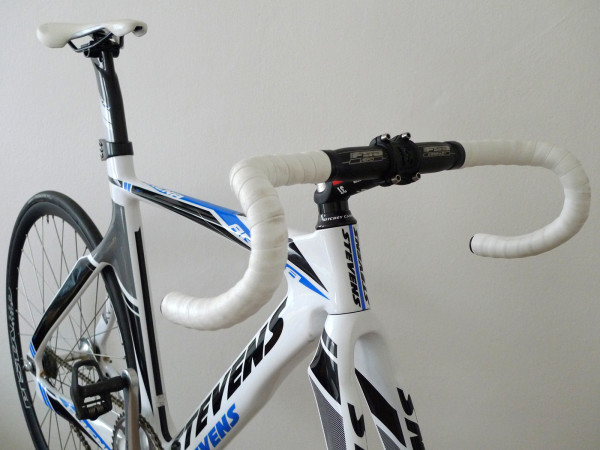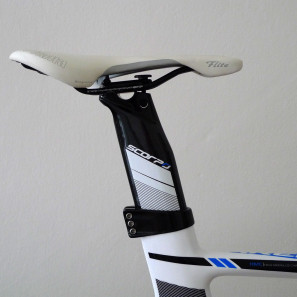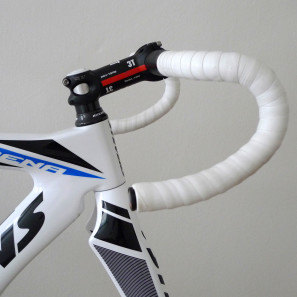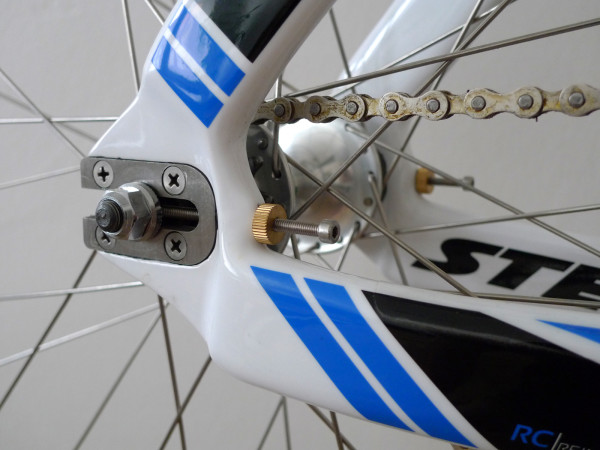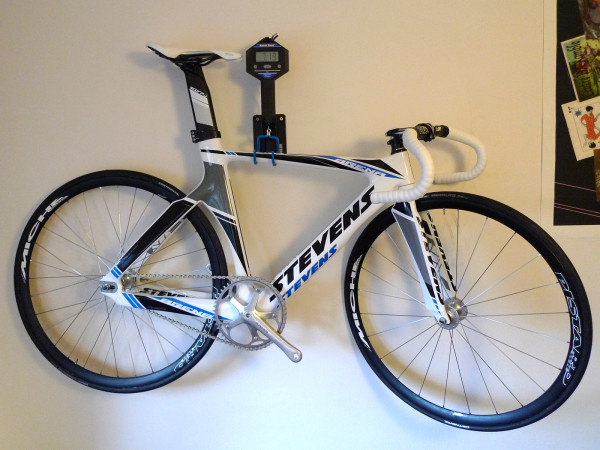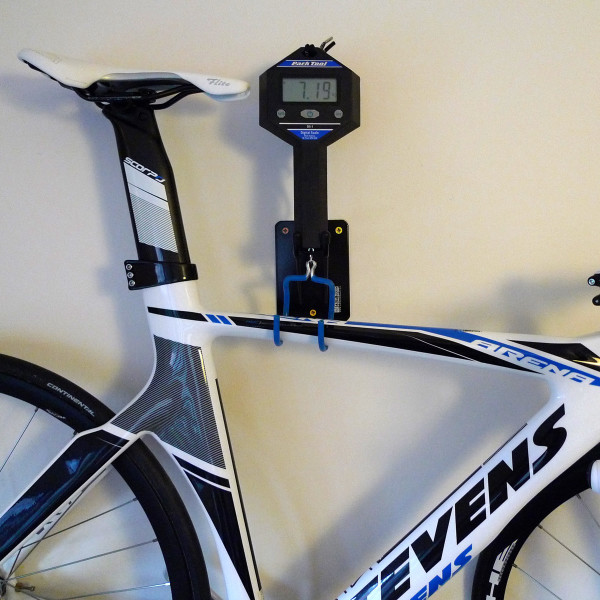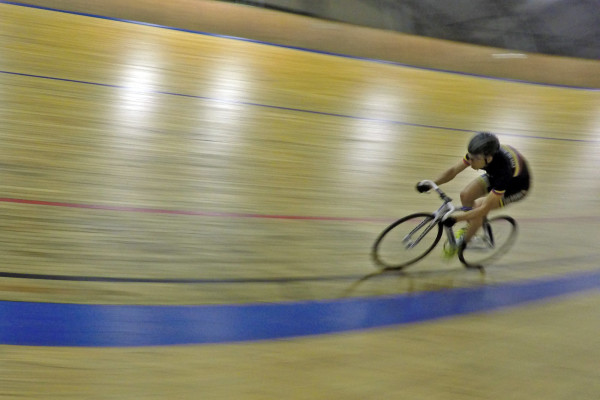It isn’t so often that we cover proper track racing bikes here, but out of our European office we do have great access to a pair of velodromes in the city of Prague. Afternoon track sessions in the winter are a good way to fight off the cold, dark days. One of our home velodromes is a 153.8m/505′ long indoor wooden oval, that opens its doors to us once a week to test gear and get in some much-needed training. We first saw the Stevens Arena as it was being piloted to a Track Worlds Scratch win by Marianne Vos several years ago, all the way back in 2011. But as a stiff and aero contender that we still see popping up on the track, we thought we would take a closer look. So far we’ve only had a few weeks with the bike, but we’ve built up some solid first impressions on the boards, and are looking forward to doing some proper indoor riding to add onto the tail of our cross season…
The Arena is touted as an ultra stiff carbon monocoque frame designed for a wide range of track competition. It uses aerodynamic tube profiles throughout, includes a proprietary aero seatpost, both front and rear wheel cutouts, and a straight steerer aero fork semi-integrated at the headtube. Not everything is aero though, as there is the need for a fairly high cockpit due to an extra short headtube with a low stack height across all frames sizes. That’s great for the ultra flexible to get a really low position, and comes into play when mounting low, aero pursuit bars, but most riders can’t get down so far.
The bike was developed with the multi-discipline champ Marianne Vos before her team switched to Giant, but even she raced the bike with a healthy stack of spacers on the steerer (around 3cm) in her Worlds winning Scratch race. There is also a chunky 3-bolt seat collar that is a bit of work to adjust. We don’t often have problems even remounting cross bikes with single bolt clamps, so not sure how necessary it is, and it ends up with a lot of turning and torque wrench fiddling to dial in proper seat height. The frames’ geometry is intended to be universal to suit all styles of racing, and uses a fairly relaxed 72.5-73° headtube angle, which they make up for with more fork rake across the board at 38mm.
A nice feature of Stevens’ ability to customize bike builds, the Arena is available as either a frameset (frame, fork, headset, and seatpost), a base kit (a complete bike, excluding wheels), or as a complete bike which allows buyers to tailor it to their riding style, and to their budget. Stevens’ standard complete bike is priced at about 3500€ in the EU, and includes a premium level build, with carbon wheels and cranks.
The frame does also include a nice user-friendly set of integrated chain tugs out back that work well by hand with simple thumbs screws. While the rear wheel still requires a wrench to tighten of course, these made dialing in proper tension a lot quicker and easier than some more finicky solutions we are accustomed to.
The 52cm Arena we are riding weighs in at 7.19kg complete (w/o pedals) on our scale. That weight is with a fairly heavy Miche Pistard wheelset that is claimed by Miche to weigh about 2015g. Track wheels don’t tend to get a lot lighter than that, but there are still several options out there that would shave off up to 400g. The classic Dura-Ace track crankset and square taper Octalink bottom bracket also aren’t as light as the FSA track cranks that Stevens shows on their website, either, but offer classic, reliable, and stiff performance. Of course weight really doesn’t make that much difference on the track, but just goes to show why the bike doesn’t come in at the 6.8kg claimed by Stevens. Frame weight alone is claimed at 1495g with another 450g for the fork.
So far the Arena does pretty well with the “lighter, stiffer, more aero” mantra, hitting each point fairly well against bikes in its price range and out performing the steel and aluminum bikes we usually ride on the track. Its massive seat and chainstays and the sizable BB junction all make for a responsive ride. On the short and steep indoor Motol track, the Arena stuck to the turns well and was pretty easy to keep on the black line.
From a purely superficial (and subjective) standpoint, it is also one of the nicer looking carbon track bikes these days. It does look a bit excessive with the branding on the downtube and fork, but we’ve certainly seen worse, even from Stevens themselves. Spec’ing the bike with Continental Sonderklasse II track tubulars was certainly a nice call (at least while we are inside.) The tires are light and feel quick, but still manage to stick like glue to the boards with their BlackChili rubber. When we venture back out to the longer concrete tracks when spring comes, I think we might swap in another set of tires and keep these to the smooth surfaces.
With the super short headtube and more relaxed front end geometry, the bike does have the feel more of a pursuit bike, where you likely end up with a full aero set up, vs. racing in a group. That tiny headtube also meant we had to work to get our fit dialed in. Most riders will end up with a bunch of spacers on the steerer (no #slamthatstem going on here) to get to the proper saddle to bar drop for them. Our test bike had the steerer tube already cut short to start with, so we needed to swap in a different stem that could get flipped for our testers. This is maybe also an issue as the sizing range is fairly limited. Four sizes are available (49, 52, 55, 57cm) with big 3cm steps in between. Add in that the stack and reach for the two middle sizes are identical, and it basically boils down to three discrete sizes, which probably means that not everyone is going to find an Arena that fits them perfectly.
We were able to dial in our fit (although our taller tester will be using a pretty creative looking stem), so are looking forward to more indoor riding for the rest of the winter. And when the snow melts and the outdoor tracks dry out, we’ll get out on some concrete ovals to see how the bike does there too, then report back.
